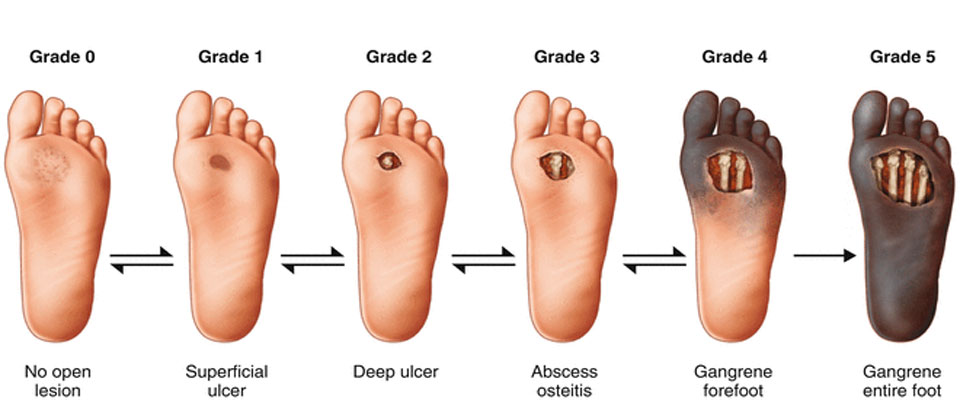
Patients with diabetes are prone to foot deformities leading to ulceration and foot infection, which can lead to amputation - related tissue necrosis. This is because vascular disease and neuropathy are combined.
Why do patients with diabetes have foot problems?
The function of nerves and blood vessels supplying feet is impaired by diabetes. This makes them susceptible to small cuts and pressure ulcers that allow the infection to enter the foot and spread. Sensory neuropathy robs the diabetic foot of the pain protective mechanism in response to minor trauma or rubbing, allowing ulceration to develop. Autonomic neuropathy reduces sweating and opens shots in the foot. Typically, the diabetic foot is warm, with strong pedal pulses and dry, cracked skin. The skin fissure allows the entry of localized infection-causing bacteria.
Motor neuropathy causes the collapse of the longitudinal and transverse arches to waste the small intrinsic muscles of the foot. Therefore, abnormal pressure areas develop which lead to ulceration. Atherosclerosis in diabetics is more extensive and distal at a much younger age. In the presence of a normal popliteal pulse due to the occlusion of the crural arteries, it is not uncommon for a diabetic to have a critically ischemic foot. In addition to major artery disease, the capillary basement membrane thickens, impairing the diffusion of oxygen into the foot tissue.
How To Treat And Avoid Diabetic Foot Problems?
The purpose of management is to prevent careful foot care. Good control of diabetes helps reduce the severity of foot complications. Neuropathy is not specifically treated. Local infections should be treated with debridement (surgical removal of infected tissue) Plain X-rays may show osteomyelitis (bone infection) and MRI is an accurate way to determine the extent of infection in the foot. Multidisciplinary teamwork, including diabetes specialist, vascular surgeon, radiologist and microbiologist, greatly improves the outcome for patients with diabetic foot problems.
Procedures to Improve Blood Flow to Diabetic Feet
Maximizing blood flow to the foot is essential. Angioplasty works quite well for larger arteries, but for small arteries around the ankle, it is less reliable. Bypasses using micro chirurgical techniques are very effective in promoting blood flow to the foot to help heal injuries.
We here in Gujarat Hospital provide best diabetic foot treatment in Surat and Gujarat.